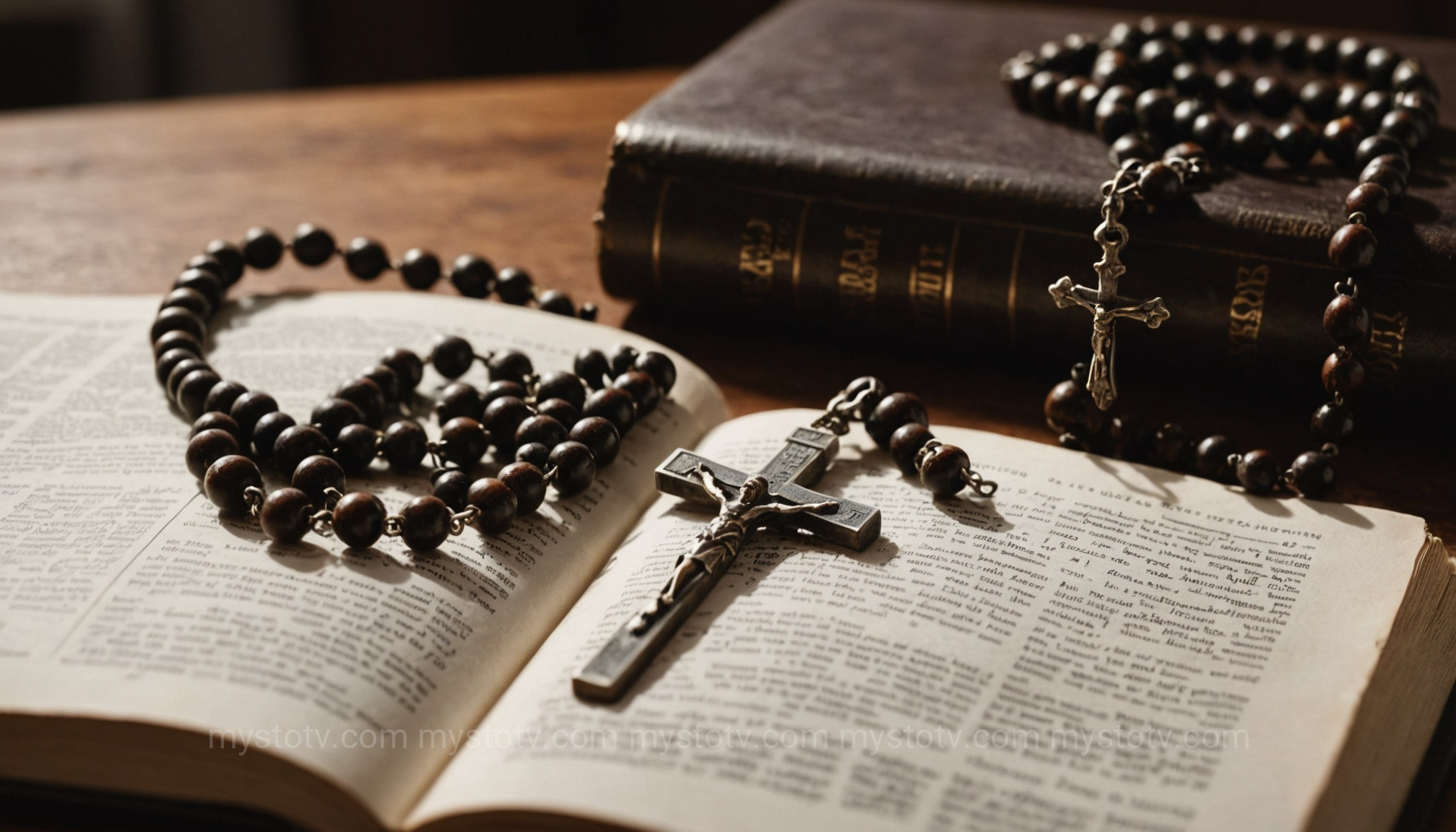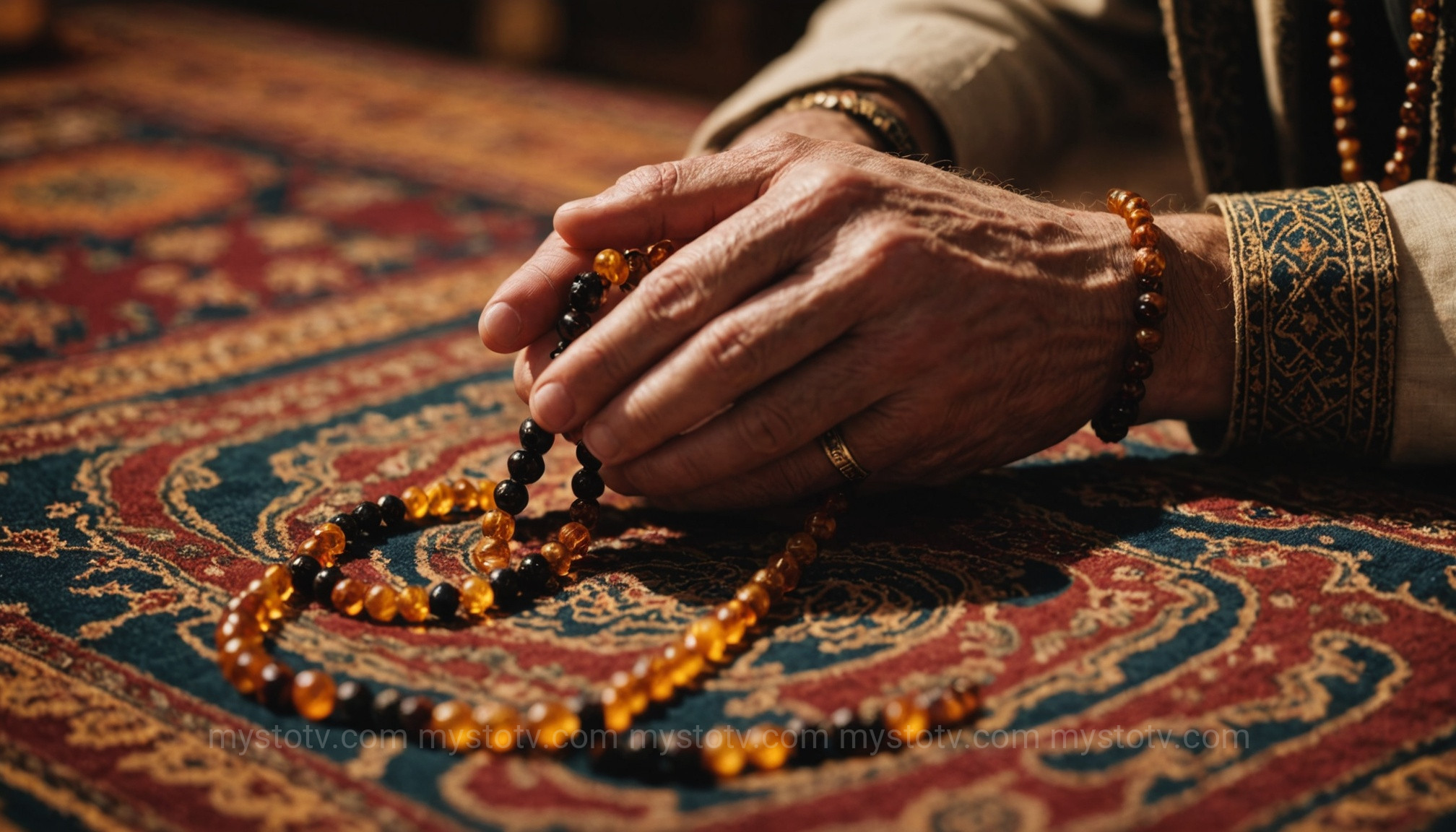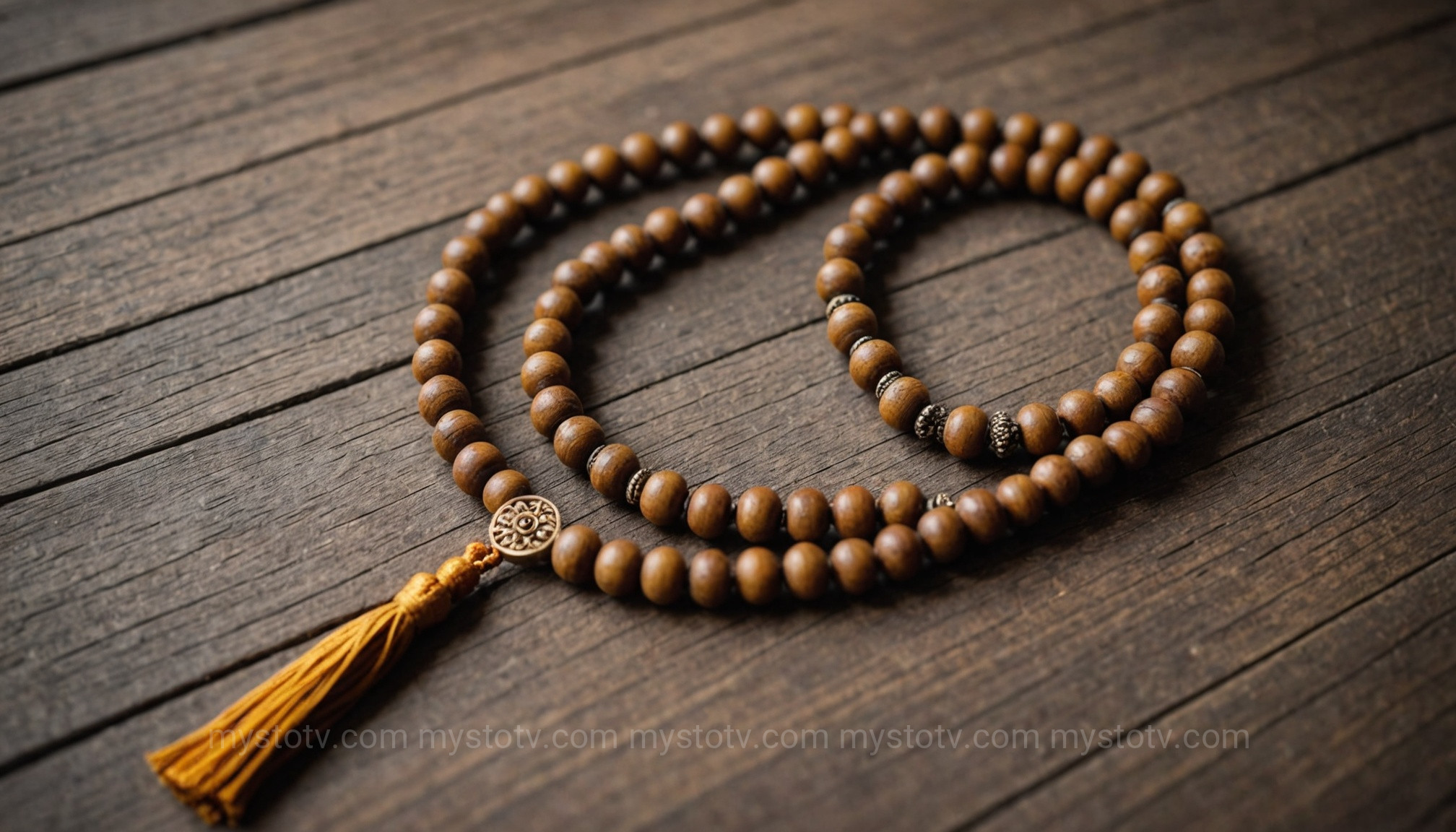Contents
Christian Prayer Beads Usage Religions: The Rosary and Beyond

Within Christianity, the most iconic form of devotional beads is the Rosary. However, the tradition of using beads for prayer is not limited to Catholicism. The analysis of Christian prayer beads usage religions demonstrate a shared goal: to guide the faithful through a structured and meditative form of prayer, freeing the mind from distraction to focus on the mysteries of faith.
The Catholic Rosary: A Meditative Journey through Faith
The Catholic Rosary is perhaps the most recognized set of prayer beads in the Western world. It is not merely a counting device but a complete system for meditation. A standard Rosary consists of 59 beads arranged in a specific pattern, beginning with a crucifix, followed by a short string of five beads, and then a larger loop of five "decades"—sets of ten small beads separated by a single larger bead. The prayers recited include the Apostles' Creed, the Our Father, the Hail Mary, and the Glory Be.
The true depth of the Rosary, however, lies in its connection to the Mysteries (Joyful, Luminous, Sorrowful, and Glorious). As the faithful finger each bead and recite the familiar prayers, they are invited to contemplate a specific moment in the life of Jesus Christ and his mother, Mary. This dual activity—the physical act of moving through the beads and the mental act of meditation—is key. The repetitive, tactile nature of the prayers occupies the conscious mind, allowing the subconscious to engage more deeply with the spiritual narrative. In this way, the Rosary transforms from a simple string of beads into a "compendium of the Gospel," a physical pathway through the core tenets of the faith.
Other Christian Traditions and their Prayer Beads Usage
While the Catholic Rosary is prominent, other Christian denominations have also embraced this form of devotional practice. The Eastern Orthodox Church uses a prayer rope, known as a chotki (Russian) or komboskini (Greek), which is typically made of knotted wool or silk. These ropes usually have 33, 50, or 100 knots, and are used for the continuous recitation of the Jesus Prayer: "Lord Jesus Christ, Son of God, have mercy on me, a sinner." The focus here is on "unceasing prayer," a state of constant communion with God.
More recently, some Protestant traditions, particularly within the Anglican Communion, have developed their own Anglican Rosary or "Christian Prayer Beads." These consist of 33 beads (symbolizing the years of Christ's life) arranged in a circle of four "weeks" of seven beads each. Unlike the Catholic Rosary, the prayers are not standardized, allowing for more personal and adaptable devotion. The analysis of these variations shows that while the form and specific prayers may differ, the core function of prayer beads usage in Christian religions remains consistent: to provide a structure and a tactile anchor for a focused, heartfelt conversation with God.
Islamic Prayer Beads Usage Religions: The Tasbih of Devotion

In Islam, prayer beads, known as the Tasbih, Misbaha, or Subha, are a common and beloved tool for devotion. While not a religious obligation, the use of the Tasbih is a widespread practice that helps the faithful perform Dhikr (remembrance of God). The analysis of Islamic prayer beads usage religions reveals a practice deeply rooted in the glorification and remembrance of God's divine attributes.
Structure and Symbolism of the Tasbih
A typical Tasbih consists of 99 beads, which directly correspond to the 99 Names of Allah (al-asmāʾ al-ḥusnā) found in the Quran and Hadith. These beads are often separated into three sections of 33 by smaller dividing beads. A shorter, 33-bead version is also common, in which case the user cycles through it three times to reach 99. The string is completed with a larger, terminal bead called the minaret and often a tassel.
The very structure of the Tasbih is a constant theological reminder. The number 99 is not arbitrary; it is a direct link to the core Islamic understanding of God's nature. Each bead represents an attribute—The Merciful, The Compassionate, The King, The Holy One. The act of touching each bead is a physical acknowledgment of these divine qualities. The materials can also hold meaning, from simple wood or seeds to semi-precious stones, but the primary symbolism resides in the powerful numerology that infuses the object with sacred significance.
The Practice of Dhikr with Tasbih Beads
The Tasbih is most commonly used after the five daily prayers (Salat) to recite specific phrases that glorify God. A common practice is to repeat "Subhanallah" (Glory be to God) 33 times, "Alhamdulillah" (Praise be to God) 33 times, and "Allahu Akbar" (God is the greatest) 33 times. The beads provide a simple and effective way to keep count without distracting the mind from the act of remembrance itself.
The analysis of this practice, known as Dhikr, shows its purpose is to cultivate a state of God-consciousness and mindfulness. In a world full of distractions, the rhythmic, repetitive motion of moving through the Tasbih helps to quiet the mind and focus the heart solely on God. It is a tool to fulfill the Quranic injunction to "remember Allah often." This form of prayer beads usage, therefore, is not about petitioning but about praise and remembrance, reinforcing the user's connection to the divine throughout their day.
Eastern Prayer Beads Usage Religions: The Mala for Meditation

In Eastern traditions such as Hinduism and Buddhism, prayer beads are known as Mala or Japa Mala. While they share the function of counting, their use is intrinsically tied to the practices of meditation, mantra recitation, and the path to spiritual awakening. Exploring prayer beads usage religions in the East uncovers a worldview where these beads are not just counters, but conduits for spiritual energy and tools for mastering the mind.
The Hindu Japa Mala: A Channel for Mantras
The Hindu Mala almost always consists of 108 beads, plus one additional bead called the Guru bead or Meru bead (symbolizing the sacred Mount Meru). The number 108 is profoundly significant in Hindu cosmology, representing the wholeness of existence. There are many interpretations, including the 108 Upanishads (sacred texts) and the approximate distance of the Sun and Moon from Earth being 108 times their respective diameters.
The Mala is used for Japa, the meditative practice of repeating a mantra. The practitioner holds the mala and uses their thumb to pull each bead towards them while reciting their chosen mantra. Upon reaching the Guru bead, they do not cross it; instead, they reverse direction. The analysis of this practice suggests that the Mala is more than a simple abacus. It is believed that as the mantra is repeated, its spiritual energy is absorbed by the beads. Over time, the Mala becomes charged with the power of the mantra, making it a sacred and personalized spiritual object that aids the devotee in their quest for liberation (moksha).
The Buddhist Mala: A Path to Mindfulness
Buddhism, which originated in the same spiritual landscape as Hinduism, also adopted the 108-bead Mala. For Buddhists, the number 108 often represents the 108 mortal desires or afflictions (kleshas) that one must overcome to achieve enlightenment. Reciting a mantra or the name of a Buddha 108 times is a practice aimed at purifying the mind and transforming these defilements.
The materials used in Buddhist Malas can also carry specific symbolic weight. Malas made from Bodhi seeds are highly prized, as the Buddha attained enlightenment under a Bodhi tree. Bone malas (often from yak bone in Tibet) serve as a stark reminder of impermanence, a central tenet of Buddhist philosophy. The use of the Mala in Buddhism is deeply connected to mindfulness (sati). The physical sensation of the beads, the sound of the mantra, and the rhythm of the breath all become focal points that anchor the meditator in the present moment, calming the "monkey mind" and paving the way for deeper insight and wisdom. This journey to mindfulness shares a psychological foundation with other faiths.
The Universal Symbolism and Psychology of Prayer Beads Usage in Religions
When we step back and analyze the practice across different faiths, striking universal themes emerge. Beyond the specific doctrines, the very act of using prayer beads speaks to a shared human psychology. The widespread and enduring nature of prayer beads usage religions have fostered points to a common need for rhythm, focus, and a tangible link to the sacred in spiritual life.
The Tactile Connection to the Sacred
In any spiritual practice, the mind is prone to wander. Prayer beads provide a simple yet brilliant solution: they engage the body in the act of prayer. The sense of touch—the feeling of a smooth bead or a rough knot passing between the fingers—grounds the practitioner. This physical, rhythmic motion has a calming, almost hypnotic effect. It can help regulate breathing and slow the heart rate, inducing a meditative state conducive to prayer and contemplation. This haptic feedback loop keeps the practitioner present and focused, transforming a purely mental exercise into a holistic, mind-body experience.
Symbolism of the Circle in Prayer Bead Usage
Most prayer beads are arranged in a circle, a potent and universal symbol. The circle represents eternity, wholeness, unity, and the cyclical nature of life and the cosmos. As one's fingers travel around the loop, it symbolizes a spiritual journey that is continuous and without end. Reaching the starting point is not an end, but a new beginning. The Guru bead on a Mala or the crucifix on a Rosary serves as a point of reflection and re-orientation before beginning the cycle again. This circular journey becomes a microcosm of the spiritual path itself—a constant return to the divine center, an unbroken connection to God or the ultimate reality.
In conclusion, while the names, numbers, and prayers may differ, the fundamental role of prayer beads is remarkably consistent across faiths. The Rosary, the Tasbih, and the Mala are all born of the same human desire to structure devotion, focus the mind, and hold something sacred in one's hands. The analysis of prayer beads usage religions have perfected over centuries shows us that these are not mere artifacts, but living tools of faith. They are physical anchors for a spiritual journey, providing a rhythm for the soul and a quiet space for contemplation in a noisy world, proving that the path to the divine can often be found in the simple, repetitive motion of a single bead passing through one's fingers.